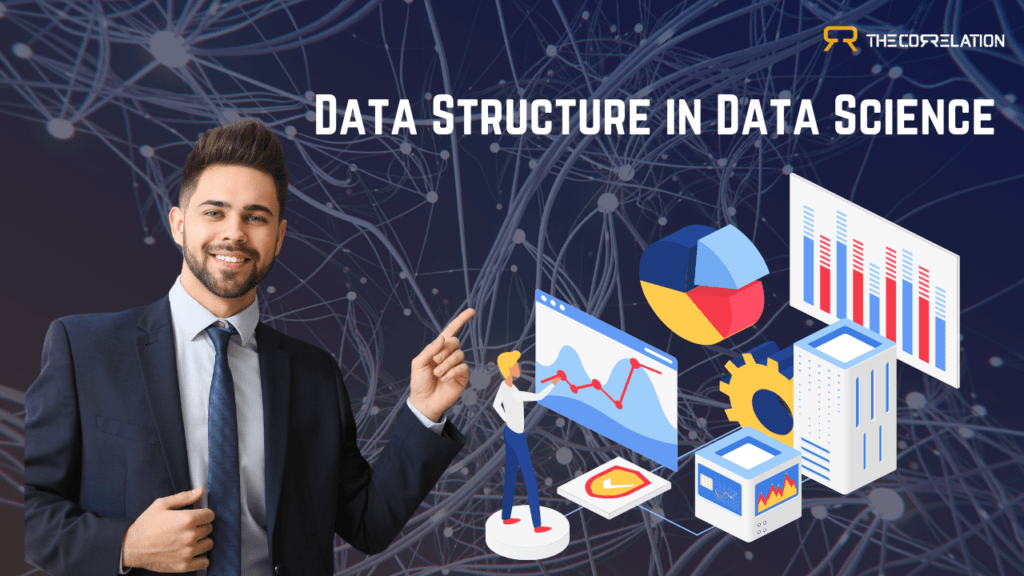Data structure and algorithms in data science are essential because they provide the framework for effective data processing, storage, and modification. They provide quick computations, streamline data operations, and assist data scientists in solving challenging issues.
Source: Introduction to Data Structure & Algorithms
Key Data Structures in Data Science:
Arrays: Elements are kept in consecutive memory regions by arrays. Arrays are a prerequisite for numerical calculations in data science since libraries such as NumPy use them to facilitate multi-dimensional data processing.
Lists: Lists are dynamic arrays in Python that simplify indexing, insertion, and deletion. They can be less memory-efficient, but they are flexible for storing ordered groupings of items.
Stacks and Queues:
Stack: A last-in, first-out (LIFO) structure that may be used to create algorithms such as depth-first search (DFS) or to backtrack through issues.
Queue: A first-in, first-out (FIFO) structure used in job scheduling and breadth-first search (BFS) algorithms.
Dictionaries (Hash Maps): Dictionaries, or hash maps, are crucial tools for working with data in formats like JSON and performing lookup operations in datasets. They are used to store key-value pairs and offer effective data retrieval.
Graphs and Trees:
Trees: Decision trees, binary trees, and other hierarchical data structures are used for organizing hierarchical data and in algorithms like decision tree classifiers.
Graphs: Recommendation systems, social media data, and network analysis all employ graphs. DFS and BFS algorithms, for example, are crucial for exploring graph topologies.
DataFrames: High-level data structures offered by R and Python frameworks such as dplyr and pandas. Real-world dataset management requires the usage of DataFrames, which are tabular structures for storing and manipulating structured data.
Source: Classification of Data Structure
Key Algorithms in Data Science:
Sorting Algorithms:
Common methods for effectively arranging data are QuickSort and MergeSort.
Sorting is an essential part of data preparation, particularly in pipelines for machine learning where data must be arranged in order to do different tasks like searching or statistical calculations.
Search Algorithms:
Fast searching in sorted datasets is made possible by Binary Search, which reduces time complexity to O(log n).
For tiny or unsorted datasets, linear search is employed.
Dynamic Programming: Dynamic programming divides large difficulties into smaller, more manageable issues to solve them. The Fibonacci sequence and the Knapsack problem are two popular algorithms that are frequently used for optimization issues.
Greedy Algorithms: These algorithms search for a global optimum by making locally optimal decisions. Examples include network analysis and route optimization, which frequently employ Dijkstra’s method for shortest-path computations.
Graph Algorithms: For tasks like social network analysis, recommendation systems, and routing issues, algorithms like DFS, BFS, and Dijkstra’s algorithm are frequently utilized.
Machine Learning Algorithms:
Linear and Logistic Regression: For problems involving categorization and prediction, use linear and logistic regression.
K-Means Clustering and K-Nearest Neighbors (KNN): Used in supervised and unsupervised learning, respectively, for classification and clustering problems.
Source: Role of Data Structure & Algorithms in Programming
Importance in Data Science:
Efficiency: Working with enormous datasets is made possible by efficient algorithms and data structures, which lower the computational complexity of activities.
Optimization: They maximize the use of time and memory, two resources that are crucial for processing large amounts of data in real-time applications.
Problem Solving: Algorithms offer techniques for resolving data-intensive issues, such as sorting sizable datasets and utilizing machine learning to do predictive analysis.
In data science, it is essential to comprehend how data structures and algorithms work together to provide scalable and effective solutions. They improve the whole data pipeline from collection to analysis in addition to improving the performance of machine learning models.


